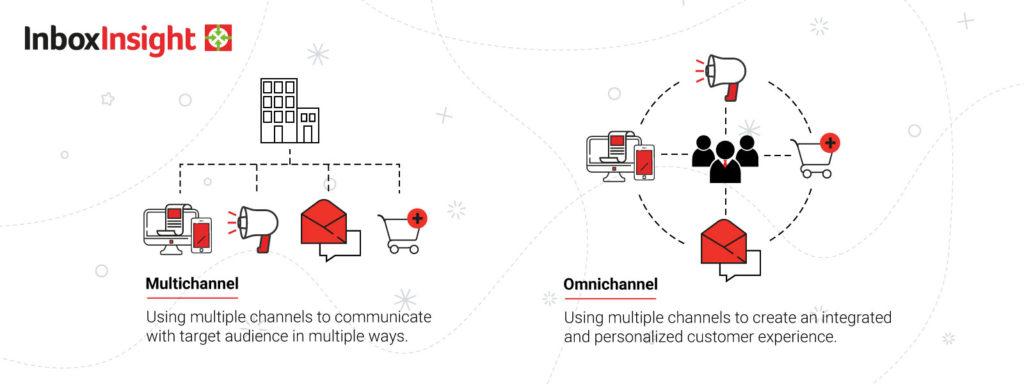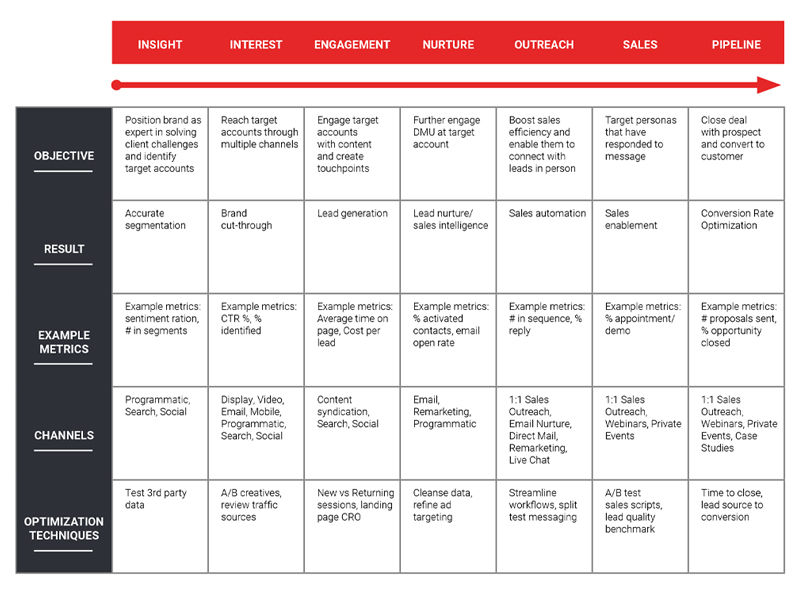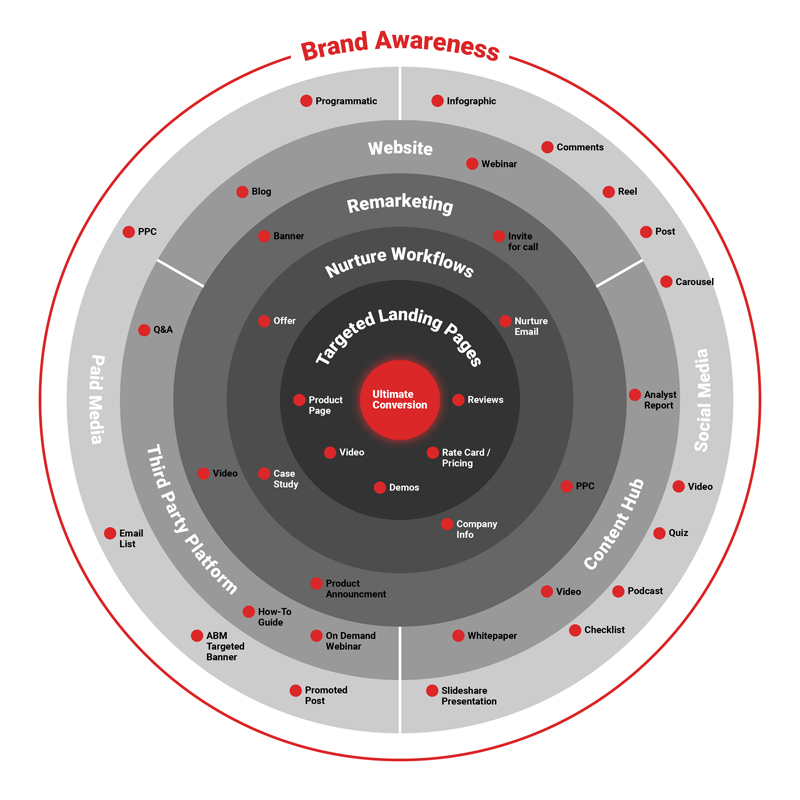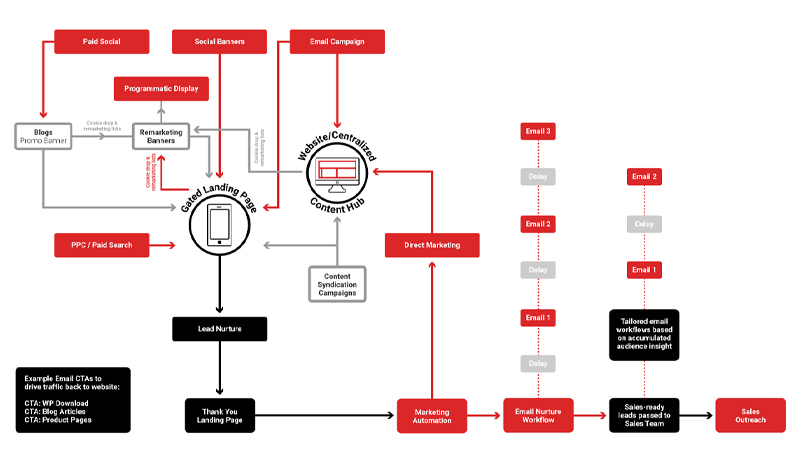B2B marketers often get hung up about the differences between multichannel and omnichannel marketing, when in fact the two approaches are actually very similar.
For example, both involve more than one marketing channel to communicate, reach and engage with their target audience. Rather than placing too much emphasis on the key differences, should marketers shift their focus to create a seamless customer experience?
This article covers:
- The difference between multichannel and omnichannel
- Why B2B marketers should avoid getting hung up on the differences between a multichannel approach and an omnichannel strategy
- How to achieve a seamless customer experience through channel alignment and cross-channel integration
Read on as we take a deeper dive into what delivering a seamless customer experience demands.
Reading time: 7 minutes
Where does this research come from?
Our first-party research was conducted among senior B2B marketers in the Insight for Professionals (IFP) community, providing accurate and relevant market research to inform and guide your multichannel strategy. Being fully aware of the crucial elements of a successful multichannel strategy can enhance your competitive position against industry leaders.
How are Multichannel and Omnichannel marketing defined?
Before deciding whether to implement a multichannel marketing strategy or an omnichannel approach, it’s first important to understand exactly what these terms mean.

What is multichannel?
Multichannel uses multiple platforms and channels to reach prospective customers. This approach involves using various marketing and communication methods, such as email, social media, mobile, websites, and print, to maximize customer engagement. This approach is becoming increasingly popular as businesses seek to reach customers through as many touchpoints as possible.
The goal of multichannel marketing is to create a consistent and cohesive customer experience, no matter what channel the customer is using. By utilizing multiple channels, businesses are better able to understand and engage with their customers, as well as to identify and target new ones. This approach also allows businesses to personalize their marketing messages, ensuring that customers receive relevant and timely information.
However, multichannel marketing efforts focus heavily on engagement with your target audience rather than providing them with a consistent customer experience. Emphasis is not on connecting all channels; each channel is working in its own way rather than integrating and collaborating with other means of communication.
What is omnichannel?
An omnichannel approach, on the other hand, exists when all channels available to your audience are fully integrated as one. The focus is on the overall experience and making this exceptional. Some B2B marketers like to think of this approach as a step up from multichannel for how it aims to understand customers and uses data to provide a personalized experience – multichannel, but better.
Omnichannel seeks to provide a seamless customer experience regardless of the channel the customer chooses to interact with. It is the integration of all customer touchpoints into a single unified experience. This means that customers can move freely between different channels and their experiences will remain consistent regardless of their choice.
Omnichannel provides a unified customer journey, which creates an enhanced customer experience. Businesses that are able to successfully integrate omnichannel into their operations are able to gain a competitive advantage as it gives them a better understanding of their customers and their preferences, which can help them tailor their services and products to meet their needs.
Achieving the optimal, seamless customer experience requires the adoption of a blend of best-in-class tactics. It’s all about being flexible, adaptive and innovative – allowing you to readily adjust your channel strategy when required to create a customer journey that beats your competitors. Discover how to master this in 6 steps:
Improve channel alignment in your overarching marketing strategy
While the role and expectation of each channel will differ, a true multichannel approach requires all components of your channel activity to align to your overarching marketing strategy. A good place to begin is by analyzing how your individual channel objectives address your primary agenda.
This can be challenging when it comes to reporting on channel performance due to key metrics differing across channels. Creating one accurate report that unifies data from different channels is a top pain point for over a third (35%) of senior B2B marketers. However, by ensuring accurate and consistent reporting of individual channel metrics and comparing these where possible can still provide a strong indication of channel alignment.
Thorough research into your target audience should also reveal your most crucial channels, how they align to your target customer’s journey and the types of content they resonate with most. This knowledge can help to map out your channels against your objectives to gain a solid understanding of how individual channel activity will help towards achieving a successful multichannel strategy.
Here is an example template of how you could do this:

With everything working towards one final outcome, this should ultimately help to achieve a seamless customer experience.
The below diagram demonstrates how to combine digital channels and content formats to support your multichannel strategy. Each piece of content you create provides a potential touchpoint with your target audience, prompting them to build accumulative knowledge of your brand as they travel through the B2B customer journey.

Focus on cross-channel integration to provide seamless experiences
One of the key takeaways from our market research analysis is that an integrated multichannel approach is vital to achieving a unified cross-channel marketing experience. A truly integrated multichannel strategy should see prospects move seamlessly towards a conversion point. It helps your audiences move around the user journey, seeing your message often and across multiple channels to drive brand awareness and interest in your product or service.
This can be a challenge to get right first time, so it’s no wonder providing a seamless multichannel experience is identified as one of the top 3 barriers to multichannel management by almost a third (29%) of B2B marketers.
Instead, embrace a more holistic, connected approach to messaging. Engage less as stages in the marketing funnel and focus more on meeting potential customers in the key moments they absorb relevant content. Surround your audiences with immersive content experiences across channels to keep them circling your channel ecosystem for a more unified cross-channel feel, ultimately working towards your end goal of conversion.
The below diagram shows how you can combine your channels with data to keep your audience engaging at relevant touchpoints and moving through your demand generation engine.

Align messaging to the customer journey and channel context
Direct response initiatives are high on the agenda for B2B marketers, with 30% currently utilizing Direct Marketing and 42% intending to invest more in the channel this year. Driving data-driven messaging and content to tightly defined audiences is clearly being leveraged in today’s multichannel marketing approach, but how do you ensure messaging is aligned to each stage of the B2B buyer journey?
Aligning content and messaging to buyer stages is critical to ensuring they seamlessly pass through your multichannel strategy towards the end goal of conversion. Targeting techniques need to focus on providing the right, relevant information at the right time and on the right channel. Otherwise, you risk bombarding them with too much information too soon, or too little not soon enough.
A good way of ensuring optimal messaging is to benchmark against industry leaders. How often are they posting and on which channels? What content formats are they utilizing? What messaging are they sending out at which stages of the buyer journey? Once you understand what is working well, and in some cases not so well, for your competitors, creating your own multichannel messaging will become far easier.
Set up sequential messaging within each channel
Over a third (35.5%) of senior B2B marketers cite accessing the right data to plan accurate remarketing and sequential messaging as one of their top 3 obstacles when it comes to planning their content strategy for multichannel distribution.
Over half (51%) rate their confidence levels in delivering sequential messaging across multiple channels as ‘Medium-High‘, 31% say ‘High‘, 15% ‘Medium‘, and just 3% ‘Medium-Low‘.
Sequential messaging relies on channels but with a focus on devices. It involves using a series of ads including banner ads, social media posts, emails and so on to target likely buyers across various devices. The sequence of messaging essentially tells a story that resonates with the target buyer and persuades them to convert.
Here’s how to master sequential messaging in 5 simple steps:
- Identify high quality leads
- Determine the best messaging and content that will resonate with them
- Target the right channels and devices
- Establish a series of ads that tell a compelling narrative
- Track its performance
An integrated multichannel approach is vital to ensure that the sequence of messaging works as intended and tells a compelling narrative which effectively converts.
Consolidate data for unified channel analytics
Finding the right analytics platform to consolidate data from different channels to provide an accurate picture is the biggest challenge when it comes to multichannel analytics according to just under half (49%) of senior B2B marketers. The more complex the multichannel approach, the more difficult it is to discover an all-encompassing analytics tool that can combine all channel data.
This is no doubt due to the differences in performance measuring metrics across channels, making it difficult to draw accurate comparisons. However, the closer you can get to a unified performance dashboard, the more effective your multichannel strategy will become thanks to the actionable insights it will provide.
Investing in a solution that can efficiently and reliably consolidate channel performance will be considerable due to the underlying complexity of combining varying metrics, though the benefits of having one often outweigh the costs. They allow for the quick identification of which channels are achieving high conversions against those that are underperforming, a clear and accurate picture of where to focus resources, where to change messaging, which channels need to be better aligned with one another and the overarching strategy.
Without a unified report, channel performance cannot be measured, optimized or benchmarked if you are lacking accurate, correlated data. Missing or incomplete data from even one channel can provide a skewed representation of channel performance, channel alignment and compatibility – hindering your goal of a seamless multichannel experience.
Promote good communication and alignment among teams
Our first-party research reveals the best ways to align all cross-channel teams to ensure they are working towards the same agenda are regular communication (46%) and weekly (46.5%), daily (43.5%) and monthly (43.5%) reports. Reporting is clearly a well-considered channel alignment method, again emphasizing the importance of unified channel analytics and accurate, combined reporting.
Strong communication is also essential, especially in larger companies where multiple channel teams exist. It’s one thing to create reports, but unless you communicate the learnings and analysis with relevant teams they are somewhat redundant.
You should aim to regularly communicate around content formats, channel messaging and performance insights to create consistency, transparency and true alignment.
Multichannel and Omnichannel: Strive for a seamless customer experience
Is there really a difference?
Achieving the ultimate goal of conversions is possible via both multichannel and omnichannel marketing, but channel alignment and cross-channel integration will drive your strategy to become best-in-class for a truly seamless experience for customers.
It is this that will determine the effectiveness of your overarching strategy. Creating a unified, integrated and personalized customer experience is what B2B marketers should really focus on. The question of whether to adopt a multichannel or omnichannel approach should not take center stage.






